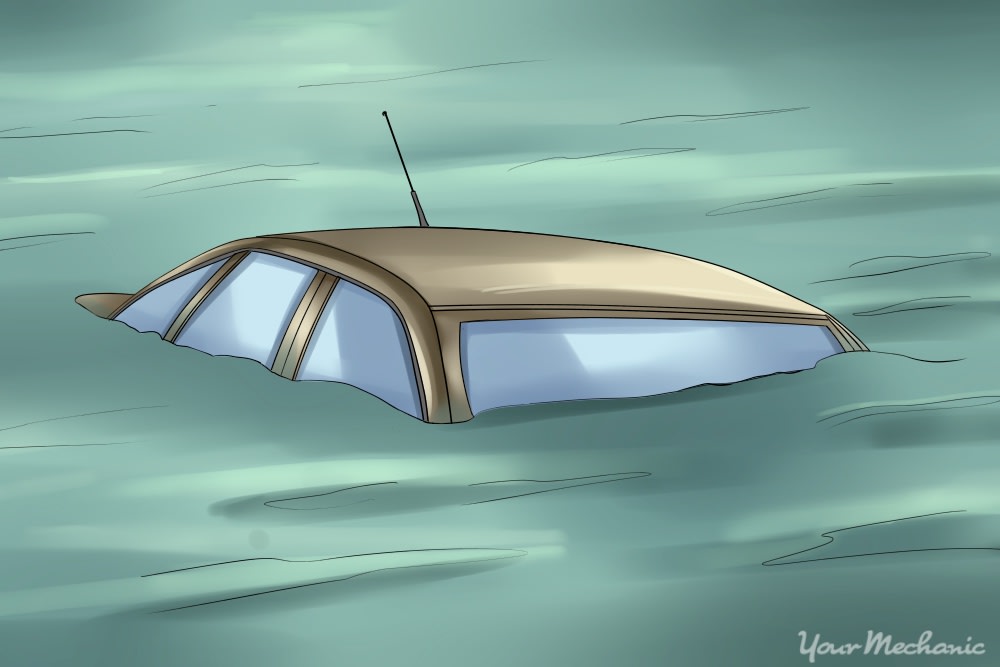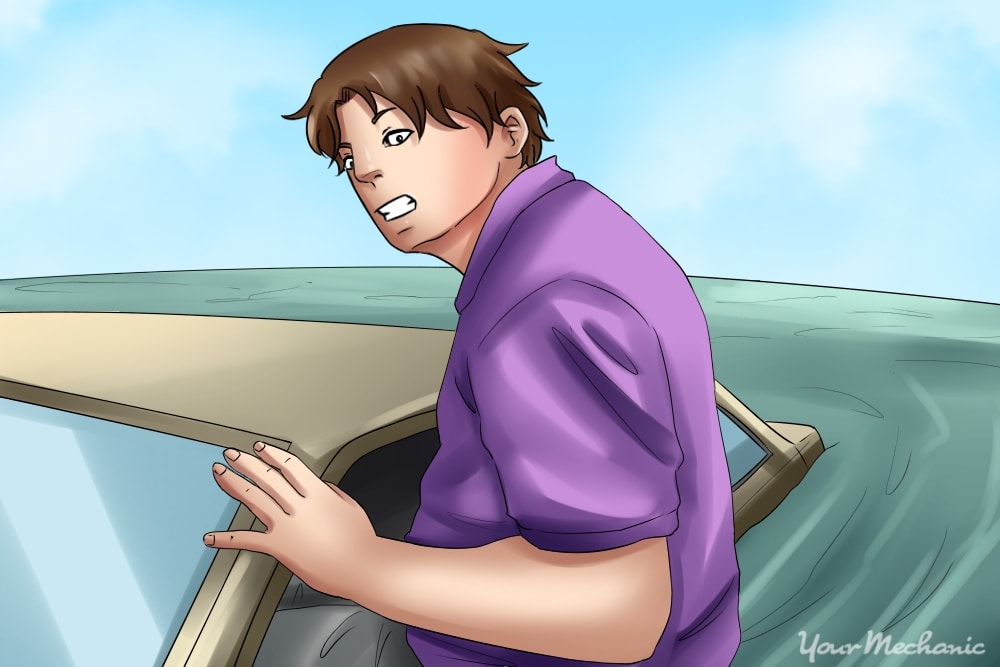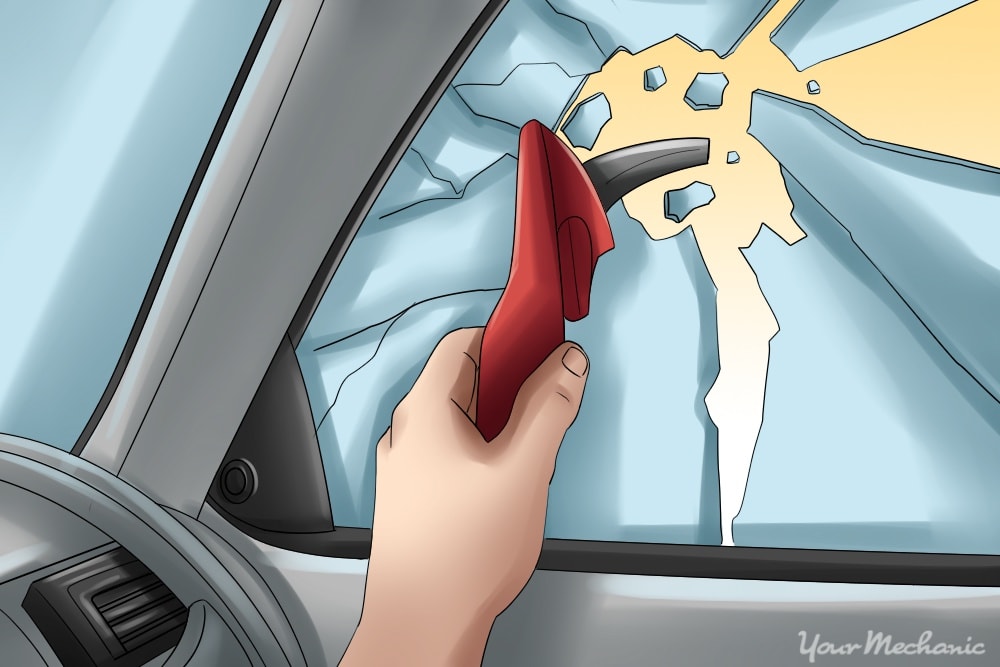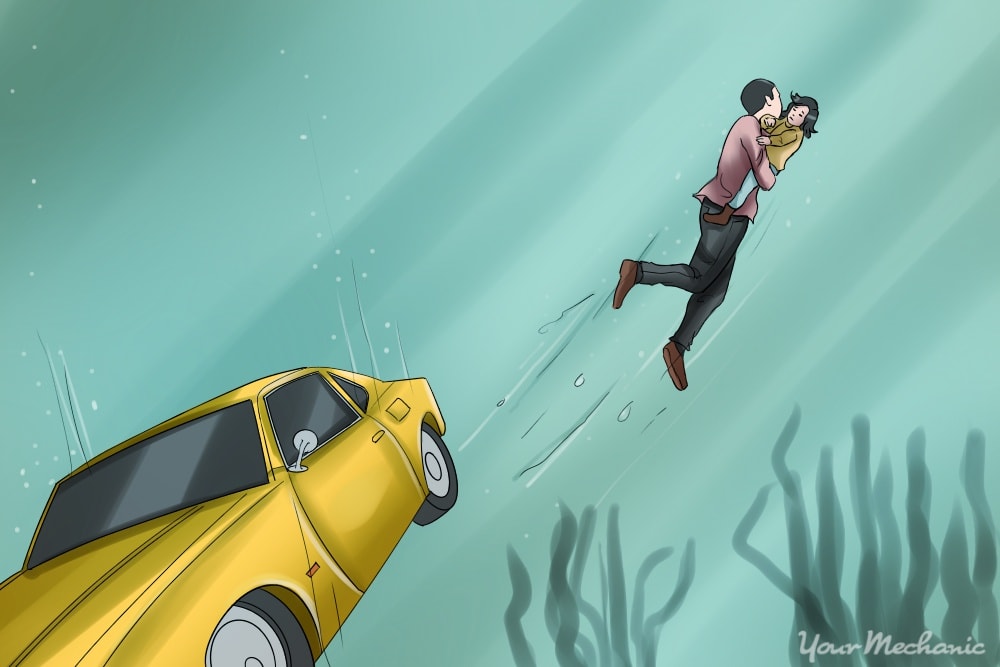

Car accidents happen every day. While you might know what to do in a fender bender, what do you do if you end up in a body of water in your vehicle? The heightened tension and danger of the situation can leave you grasping for answers when it happens, and by the time you do act, it might be too late. By remaining calm and keeping some steps in mind, you can escape from a sinking car.
Part 1 of 4: Open the windows
So, you have had an accident and now find yourself in a body of water. With your vehicle sinking, you have little time to escape, and the time to do that is now. You need to quickly assess the situation and determine who else in the car with you might need help getting out. If you have children in the car with you, then the answer is yes. Start by opening your window.
- Warning: Do not attempt to call emergency services on your cell phone. With every second vital to your survival, time wasted on the phone reduces your chances, and any children in the car with you, of making it out of a sinking car alive.
Step 1: Open the vehicle windows. Open your window as soon as you realize your car is sinking in a body of water.
If you have electric windows, you only have a short time before they quit working.
Opening the window as soon as you hit the water gives you an easy escape route and allows you to focus on helping others, such as children, escape from the sinking vehicle.
Part 2 of 4: Break the window
Materials Needed
- Object to break window such as a special car hammer, screwdriver, or tire iron
Another option you might have to resort to is breaking the window. A shorted electrical system, or a window you cannot get to go down, means you have to break the window to exit the vehicle. You also need to break the window if it only opens part of the way.
Tip: If you do not have a tool to break the window, you can pull out the headrest and use the metal ends that go into the seat to break the window. To remove the headrest, depress the button, which allows you to move it up and down, and pull up on it until it comes out of the seat.
Warning: You might think waiting for the car to fill with water and allowing the pressure to equalize with that on the outside is the easiest way to get out of a vehicle. And while you could possibly survive by doing this, the chances of not making it out out of the car increase astronomically. Plus, if you have children in the vehicle with you, the likelihood of everyone making it out alive is very little indeed. It is better to escape during the initial seconds of hitting the water.
Step 1: Break the window. Use an object, such as a hammer, screwdriver, or other tool to break the window.
Aim for the center of the side window, and then strike the window with a large amount of force using the tool.
A great tool for breaking a window in an emergency is a center punch.
Tip: Plan ahead and keep a tool for breaking your window in case of an emergency. Stow the tool in the driver's side door pocket for easy retrieval when needed.
Warning: Do not waste your time breaking the front window. Being constructed of safety glass, the front windshield is hard to break in the first place. In addition, the stickiness of the safety glass can make it difficult to get through.
Part 3 of 4: Remove your seatbelt
Once you have opened, or broken, the window, it is time to remove your seatbelt. It is important that you keep calm during this process. Getting flustered and in too much of a hurry can lead to you making mistakes, which could ultimately cost someone their life, including your own.

Step 1: Seat belts. Start by unbuckling your seat belt.
It is important that you start by unbuckling your seat belt first. This gives you full range of motion to unbuckle the seatbelt of others who may not be able to do so themselves.
Step 2: Unbuckle any children. Next, unbuckle the seat belts of any children in the car.
Start with the oldest child so that they can help you with any younger children.
- Tip: While having to escape a sinking vehicle is not likely to happen, you should still discuss the possibility with your children and what they need to do if it does happen. It doesn't hurt to have a game plan in place in case the worse happens.
Part 4 of 4: Get out of the vehicle
Now it is time to get out of the sinking vehicle. Whether you opt to open or break a window, or wait until you can open the door, you need to hold your breath until you reach the surface. In addition, you need to make sure any children are freed from the vehicle first before you can make your escape.
- Tip: If you get disoriented while escaping from the vehicle, just follow the air bubbles. The air bubbles rise to the surface, and following them should lead you there.
Step 1: Help children first. First, heave any children to the surface.
If the child cannot swim, try to give them something to float on until they can be helped further.
An adult needs to swim with any child that cannot swim and doesn't have a flotation device.
Step 2: Exit the vehicle. After all children have been evacuated from the sinking vehicle, it is your turn to get out.
When leaving the vehicle, make sure to use only your arms until you clear the car. Otherwise, you could accidently kick others as they are leaving.
If the vehicle is still sinking and not yet submerged, hang on to the outside and help any children if present. Look for the shore and push off from the vehicle as it sinks below the surface.
If the vehicle is already submerged, push off the car to get to the surface quicker. Once on the surface, help any children and look for the shore.
Step 3: If escaping via the door. If you cannot get the window to roll down or don't have anything to break it, you may need to wait for the pressure inside the vehicle to equalize with the water pressure outside.
Keep calm, breathing normally until the water is chest high. Once the water is chest high, take a deep breath and hold your nose. Advise any children of this as well.
Keep your hand on the door latch to stay oriented.
As the pressure equalizes, open the door and exit the vehicle. Make sure to help any children out first.
Once everyone is clear, swim toward the surface, help any children, and swim for shore.
Step 4: Seek medical attention. Once safely on shore, tend to anyone injured or perform CPR if needed.
You should also call emergency services if you are able or flag someone down to help you.
You also need to be aware of hypothermia and seek warmth as soon as possible.
Car accidents are scary, but finding yourself in a sinking car is a nightmare scenario. By remaining calm and following some life-saving steps, you can escape a watery grave. You should also keep in mind any children who are in the car with you and make sure they make their escape before you do.






